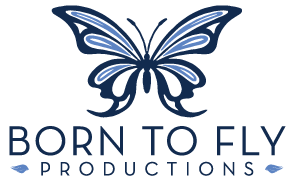
Remote Teacher Assessment Program
A unique service for teachers brought to you by AerialDancing.com.
Description
Many teachers struggle to transition into the role of teacher from that of performer or aerial enthusiast. This service is meant to help you become a more confident aerial teacher through direct consultation with experienced aerial instructors Julianna Hane and Elizabeth Stich. Our goal is to help teachers not only talk the talk, but walk the walk, demonstrating and verbally explaining skills with safety and clarity to help your students find success in your classes.
What are the benefits of a teaching consultation?
- We can affirm for you what is working well in your classes.
- We can answer your questions on a range of issues including classroom management, learning styles, safe practices, lesson plans, body language and delivery, and other challenges.
- We can make recommendations for more extensive training options to take your teaching to the next level.
- Taking advantage of this service gets you one step closer towards becoming a Verified Aerial Teacher if you are not already.
- If you are already a Verified Aerial Teacher, our service can be listed in your teacher directory listing at AerialDancing.com. Your listing will be updated to reflect that you have completed the remote teacher assessment program.
What makes this consultation special?
Both Julianna and Elizabeth are Certified Laban Movement Analysts, meaning they will not only analyze what you are teaching, but how you are teaching it through your body language. You will receive tips to help you become more connected in your movement and presentation so that you can more clearly communicate and express ideas to your students.
How will I receive feedback?
The most basic option is to receive a personal written assessment. A consultant will watch your video and give you personalized feedback based on your interests from the questionnaire.
The second option is to receive a written assessment followed by a one-hour Skype conversation with your consultant. This real-time discussion uses the written assessment as a starting point to address your deeper questions and concerns about teaching.
How does it work?
- Film yourself teaching a 60-90 min. class of your choice. Be sure your voice is audible, and that both you and the students are visible in the video. We’ll be able to give you the most accurate feedback if we can adequately see and hear your class in action, so you may want to have someone film you. Make sure to obtain permission from your students prior to filming them. Let them know that it is for feedback and will remain confidential. We will not use your video outside the purposes of this assessment unless we ask permission to do so.
- Send your video to info@aerialdancing.com. There are a couple ways to send your video. Gmail has a new feature that allows to directly send large files. You can also use a dropbox or send us a link to your video on youtube or vimeo.
- When you send your video, make sure to attach your teacher questionnaire (see below). This form will help us give you relevant feedback that supports your needs and goals.
When will I receive feedback?
We will send written feedback within 1-2 weeks of receiving the video. If you choose the Skype feedback session, you will receive an email to schedule that conversation at your convenience.
What does it cost?
Teacher Questionnaire:
1. What is your teaching/training background in aerial arts or other movement areas?
2. Why are you interested in receiving feedback? What are your goals?
3. Please circle topics below that are most relevant to your teaching needs.
- Learning styles/teaching styles
- Classroom management
- Lesson planning
- Facilitating creative lessons
- Safety procedures such as spotting, etc.
- Working with specific populations
- Body language, use of voice, delivery, etc. (How you’re presenting your lesson)
4. Do you have any specific questions for your consultant? Please list them here.
Elizabeth Stich Bio
When Elizabeth Stich’s older brother catapulted her off a makeshift teeter board and into the hospital at the tender age of 8, she never imagined it would foreshadow a distant career in the circus. A childhood ballerina turned college modern dancer turned aerialist, Liz has been an aerial instructor and performer for over 5 years – first with Revolve Aerial Dance and then Aerial Arts of Utah. She has taught aerial dance courses and master classes in higher education settings such as Weber State University, Snow College, and Brigham Young University. She has also taught a variety of dance technique and theory courses as an adjunct instructor at Weber State University and Utah Valley University and as a Graduate Teaching Assistant at the University of Utah. In addition to her love of teaching, Liz is a passionate performer, most recently battling wind and water in over 200 shows of Cirque de la Mer at Sea World San Diego.
Liz holds a Master of Fine Arts degree in Modern Dance from the University of Utah, a Bachelor of Arts degree with a minor in Dance Education from the University of Georgia, and a Certificate in Laban Movement Analysis/Baretenieff Fundamentals from Integrated Movement Studies. She has co-presented on the creative application of Laban theory to aerial dance with colleague Julianna Hane at the Motus Humanus Roundtable.
Julianna Hane Bio
Julianna Gaillard Hane, a native of South Carolina, traded life on a cotton farm to be a dancer and aerialist. Julianna’s first experience in aerial dance happened at Winthrop University (where she received a B.A. in Dance) when she performed in two rope & harness works by Mary Beth Young. She then continued her study of aerial work at New England Center for Circus Arts with Elsie Smith, Serenity Smith Forchion, and Aimee Hancock. She has also studied with Bay Area artists Joanna Haigood and Elena Panova.
Julianna holds a M.F.A. in Modern Dance from the University of Utah. During her graduate study Julianna founded Revolve Aerial Dance, a school and performing company specializing in aerial fabric, trapeze, and aerial hoop. Through the company she co-produced aerial concerts, performed in corporate events, and set an aerial dance work on the Snow College Dance Company in Ephraim, Utah. She wrote her master’s thesis on aerial dance choreography under the guidance of Donna White, Eric Handman, Abby Fiat and Tandy Beal. Julianna has written an aerial dance curriculum for her studio and a teacher training course to mentor new aerial teachers. She also co-authored the Aerial Hoop Manual Series (Volume 1 is out and Volume 2 is going to be out soon) with Rebekah Leach.


